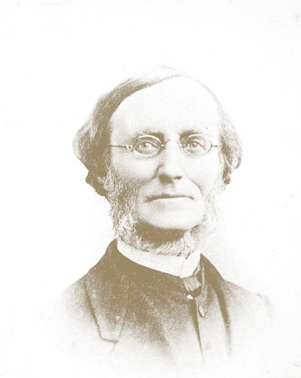 loading
loading
The missionary and the gorilla University of Virginia"I have found the existence of an animal of extraordinary character," wrote Savage from the Gaboon (now Gabon) River area in 1847. View full imageBy the time he made his discovery, Savage was an old Africa hand. He'd arrived on the continent for the first time at the age of 32, on Christmas Day, 1836. Though he was just three years out of Yale Medical School, he'd taken up his station at Cape Palmas, Liberia, primarily as an Episcopal missionary (he had studied at the Theological Seminary of Virginia), and only secondarily as a doctor. He served in Liberia with what seems now like an odd mix of Christian colonial fervor and considerable scientific curiosity. As a missionary and doctor, he came to know "the African's mind & tongue," which in Cape Palmas meant Grebo. As a naturalist, he also brought a keen eye and unusual depth of knowledge to the discovery of African species. Clergymen then commonly studied the natural world as a way to understand and glorify the mind of God. But Savage also seemed to relish nature for its own sake. He regularly shipped insect specimens back to a friend in England. Later, he would publish the first detailed description of the behavior of driver ants, not a study for the faint of heart. (When he presented his pinky to the severed head of one soldier ant, it bit so powerfully "that the point of the mandibles met beneath the cuticle." Then it withdrew and started digging in with alternating knife strokes, "wounding and cutting wider and deeper.") He was no less intrepid about his religion. In 1839, four months into a new tour of duty, malaria killed his 28-year-old first wife, Susan. No record survives of his own sense of loss, nor do we know what he told her parents, who had already lost seven other children in infancy and now had just one daughter remaining. (She would die a year later.) But an elegy written by a friend, a fellow clergyman, suggests the strength of the religious feelings that had motivated them both. "If the blood of the martyrs be the seed of the church," then from Susan's grave, the friend declared, "there yet may spring a noiseless band of heavenly soldiery who will carry the war into Africa and plant the ensigns of the gospel high on the pagan hills." Savage, who remarried in 1842, continued to serve at Cape Palmas even after his second wife succumbed to tropical disease. While Savage proselytized in Africa, Jeffries Wyman devoted himself to anatomical studies and bided his time, hoping his Boston friends would secure him a position on the faculty at Harvard. He spent a year studying anatomy in Paris and then, under the tutelage of Richard Owen, in London. For five years he taught anatomy and physiology at a medical school in Richmond, Virginia. Savage and Wyman probably met in August 1843, when the missionary returned by way of Boston for ten months of recovery at home. They collaborated almost immediately on a paper about chimpanzees. "The breasts were flabby and slightly protuberant," Savage reported, sounding more like a doctor than a missionary. He went on to comment learnedly on the tendency of other biologists to confuse the placement of the big toe in chimpanzees with that of the orangutan. (Both primates were already known to European scientists, though poorly understood.) He also challenged the great French anatomist Georges Cuvier's interpretation of the chimpanzee's prominent brow ridge. That self-assurance, and detailed knowledge about chimpanzee anatomy, would soon prove critical to the discovery of the gorilla. His moment came, oddly, after he had already sailed for home early in 1847, at the end of his years in Africa. His route from Liberia took him eastward at first, under the belly of West Africa, to the Gaboon (now Gabon) River. There he was "unexpectedly detained" for more than a month. Savage stayed at the house of a friend and fellow missionary, Rev. John L. Wilson, in a village just south of what is now the capital city of Libreville. Like other Europeans on the continent, Wilson apparently decorated his home with African curiosities. One skull immediately caught Savage's attention. It was too large for a chimpanzee, with huge, glowering eye sockets, a high bony sagittal ridge running back like a mohawk across the top of the skull, and the lambdoidal ridge like a broad shelf across the back -- anchor points for huge jaw and neck muscles. Savage questioned the local hunters, who told him about "a monkey-like animal, remarkable for its size, ferocity and habits." The shape of the skull, combined with "information derived from several intelligent natives," convinced him that he was looking at "a new species of Orang." (The Malay word orang, made famous by the Southeast Asian ape, was still broadly applied to all great apes.) Savage had corresponded in the past with Richard Owen at the Royal College of Surgeons; he had also received inquiries from Samuel Stutchbury, curator of the Bristol Institution for the Advancement of Science. Now he wrote to both. "I have found the existence of an animal of an extraordinary character in this locality," he told Owen, and sent along detailed drawings of the skull, asking him to compare it with an orangutan skull in the Royal College collection.
|
|